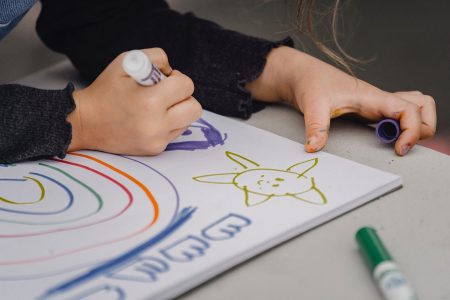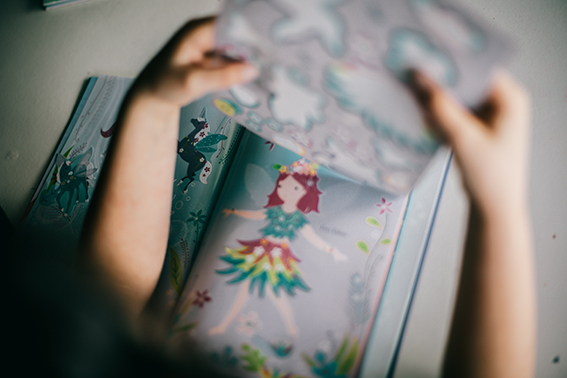
How books help children with cancer
The challenges to assist a child going through cancer and other life-changing illnesses are numerous. Therefore, children need continuous physical and emotional support from their parents.
A children’s book offers a gateway from the pain and emotional stress pediatric cancer involves. This aid can give the minor enough material to combine fantasy, opportunity, hope and provide a hint for the children to express themselves.
Color and movement
Books bring many benefits for children. Among these are the development of social skills and personal expression, which children will later use in the teenager and, years later, adult world, where they must face more complex social situations and fast decision-making. To reach this objective, artists use vibrant colors, ink, dialogue boxes, and well-defined traces to deliver an exciting and entertaining adventure.
The children, unaware of all these signs, will begin learning codes and cultural references that they will use to solve challenges.
On this point, images and signs help children develop non-verbal skills by associating attitudes and reactions to different activities. In a children’s book, these features are displayed through graphics mounted one after the other in a sequence of events, easy to absorb for the children, giving the appearance of movement and time streaming.
Learn and apply
Furthermore, the vibrant colors, so popularly used to decorate children’s spaces, have a clear purpose. Different hues help connect brain pathways producing reactions and uncovering visual preferences in evidence.
The child’s first decision-making usually starts during this learning stage. At that moment, children start connecting what they see in the books with what they will see in real life.
Part of this learning is also proposed by artists who, through their work, show different degrees of space, distance, and alertness; while at the same time generating the illusion of movement that helps children relate signs to circumstances and actions.

Fueled by imagination and its constant search for knowledge, books help children grasp real, day-to-day problems while teaching them how to use vocabulary and social skills.
Vocabulary and social skills
A book offers a new dimension full of stimulus to children’s minds. Fueled by imagination and its constant search for knowledge, books help children grasp real day-by-day problems while teaching them how to use vocabulary and social skills.
There is also the matter of fitting into a group. On this subject, even if many parents do not want to consider it as an essential matter, humans have a natural need to fit in a group, or at least to find a place in society. In this case, if children notice there is an obstacle to being included in a group they aspire to be, they will turn frustrated and blame themselves.
Furthermore, cancer is one of those diseases that will change children’s perception of themselves and how he interacts with social groups around them.
For sure, parents want to protect their children all the time by keeping them in a safe space, which is vital during the early stages of their upbringing. Still, mom and dad must also provide knowledge, through information and interaction, to prepare their kids to face social challenges independently.
Motivate children through imagination
By reading books, narrative elements such as plot, challenges, and expectations together with colorful images and entertaining characters, children who have cancer can explore different experiences and travel out of their beds fueled by their imagination.
This effect makes emotions such as frustration and the impossibility to play, given the circumstances, fade away while developing creativity and strengthening their self-confidence.

At the same time, books also introduce children to social skills , which could operate as an excellent introductory stage to familiarize the minor with plastic arts such as painting, coloring, sculpting, or even acting and singing.
An important note about this subject is that children, by themselves, will decide how to express their needs for social interaction and to which degree they prefer to do it.

Some children and Introverts and others extroverts therefore both express their emotions in different ways.
Here is where we can find introvert and extrovert personalities and how they prefer to engage within groups. As mentioned before, a book provides a wholesome environment for new vocabulary, which means more tools for children to express their feelings in more complex ways. In other words, if you combine these skills, you can open a gate for creativity and expression.
Motivate children through imagination
Metaphorically, a book could also be a person. If I ask you to name your favorite book, you probably will revive memories you experienced when you first read that piece of literature. You will address a first impression, a voice, a tone, and a feeling after having a pleasant reading.

Children also get this feeling, much more if the book can project the children’s needs and feelings, even the not-so-happy ones. Having a ‘talk’ with a book can unlock hard feelings and expectations that may have been unnoticed by parents.
Therefore, fictional story characters can help children vent their emotions through coincidences and similarities with their story. In this regard, children will not feel threatened or nervous about engaging in social interactions because they control the situation and decide when to stop that interaction.
After the children have read the book, they can discuss their content freely, which opens a way for parents to talk about similarities and how the characters process their fears and condition.
Also, if the parents do not know how to engage with their kids or do not find the right words, a book can help them connect and relate to their loved ones. A parent can personify one of the book characters and interact with their children. They can also use those ‘disguises’ to correct the kid’s behavior or empower them in their recovery process.


